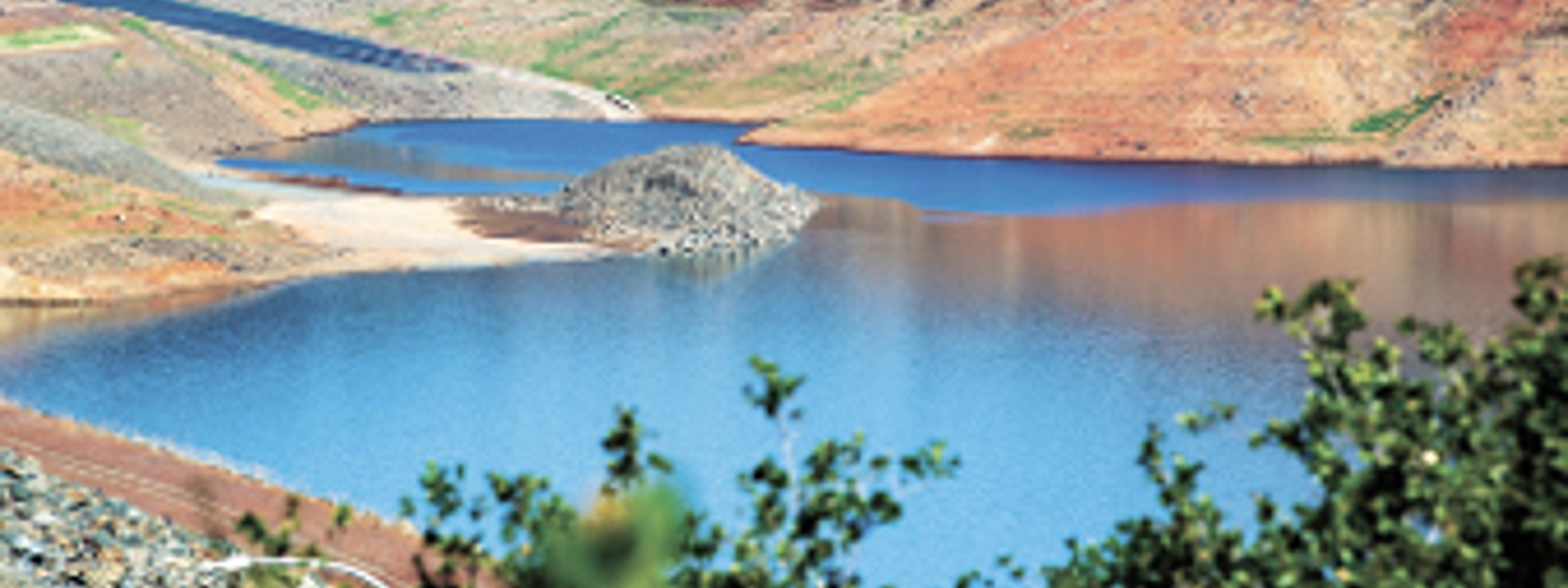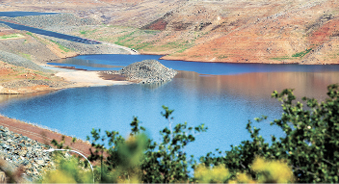Newsom advisor warns of climate threats to farming


By Christine Souza
California is preparing for a drier future.
Climate impacts affecting the state, such as drought, a shrinking snowpack, higher temperatures and wildfires, were central to a discussion last week by California Department of Food and Agriculture Secretary Karen Ross and members of the state board of food and agriculture.
“California’s water supply strategy focuses on developing new water supplies, expanding storage, reducing demand and improving overall data and management,” Ross said. “As we look at a hotter and drier future, I know that California’s farmers and ranchers will continue to adapt and lead the nation in water-use efficiency and conservation.”
Speaking at the Oct. 4 board meeting, Kayla Ungar, CDFA special advisor for climate, water and drought, discussed Gov. Gavin Newsom’s water-supply strategy released in August. The plan outlines the state’s priority actions to adapt and protect water supplies in the face of a hotter, drier climate, she explained. She suggested that “more impacts are coming” from climate change.
Anticipated impacts, she said, include a temperature increase of up to 4.4 to 5.9 degrees, more heat events and a one-third decline in snowpack, even if precipitation remains stable. That would result in a 10% reduction in the state’s existing water supply by 2040. In addition, California expects to deal with rising sea levels and more wildfires, she said.
“Together, these impacts are an existential threat to agriculture and in particular, eight out of the 20 major crops grown in California, including almonds, wine grapes, table grapes, strawberries, hay, walnuts, freestone peaches and cherries,” Ungar said. “California’s managed water supply is currently 60 to 90 million acre-feet per year. The impact of a drier climate means the disappearance of about 6 to 9 million acre-feet of water supply.”
Newsom’s water-supply strategy prioritizes actions to capture, recycle, desalinize and conserve more water, and includes increasing storage by creating space for up to 4 million acre-feet, so the state can capitalize on big storms and store water for dry periods.
Other goals include building the water-storage projects voters approved in the 2014 Proposition 1 water bond, plus raising San Luis Reservoir and expanding groundwater recharge.
“To match the pace of climate change, California must move smarter and faster to update our water systems,” Ungar said.
Climate scientist Jonathan Overpeck made a presentation to the board about aridification, or the gradual change from a wetter to a drier climate. “I think things are changing dramatically,” said Overpeck, the Samuel A. Graham dean of the School for Environment and Sustainability at the University of Michigan.
“It turns out, though, that warming is making the droughts a lot worse, more frequent and persistent,” Overpeck said. “The same warming is what’s leading to more wildfires, more heat waves and much worse tropical cyclone or hurricane disasters.”
While the severity of the warming is not the same everywhere, Overpeck said, warming has increased by about 1 degree Celsius or 2 degrees Fahrenheit. A failure to rein in climate change means warming could increase even more.
“In much of the West, much of the planet, the growing season has lengthened,” Overpeck said. “Spring comes earlier, winter comes later in the year, and that means, for example, in the headwaters of the Colorado River that the growing season is six weeks longer than it used to be. If it’s hot and dry enough, long enough, or it’s not raining, then you’re actually going to wilt and kill plants.”
California forests are experiencing more tree mortality due to warming, he said, adding that the snowpack is being lost to the atmosphere, and groundwater aquifers are becoming depleted.
“We have to cut our water use, but it’s not enough,” he said, adding that water security risks are affecting the entire planet.
“It’s going to be overwhelmed by climate change, so the sooner we get everyone acting on climate change just as aggressively or more than California, the sooner we are going to stabilize our sustainable water supplies and keep them from shrinking,” Overpeck said.
Newsom’s 2020 Water Resilience Portfolio called for voluntary agreements, a collaborative approach and an alternative to the 55% unimpaired flows for tributaries sought by the California State Water Resources Control Board.
David Guy, president of the Northern California Water Association, said “there’s a ton of momentum”for the voluntary agreement framework for the Sacramento River tributaries.
“We’ve actually already completed some projects under the voluntary agreement process, and there’s several more that are already in the pipeline under construction in all four rivers,” Guy said of the agreements, which include a portfolio of flows and projects to reactivate the landscape.
“All of this works in harmony,” Guy added. “Those of you who are farmers, you can farm in the spring and summer and in the fall. You put some water out for decomposition or for some other purposes that can really help birds in the Pacific Flyway.”
Guy said a governance proposal for the effort was submitted to the state water board. Once approved, he said, the plan would be an eight-year agreement with the potential for an extension to 15 years.
During the meeting, the board heard from California recipients of federal climate-smart commodity programs that will be implemented in state. The U.S. Department of Agriculture is investing up to $2.8 billion in 70 selected projects under the first pool of funding. Projects from the second funding pool will be announced later this year.
Looking ahead to the 2023 water year, California State Board of Food and Agriculture President Don Cameron said “California agriculture must do its part to reduce overall demand, while maintaining family farms, markets, communities and our overall food security.”
“We remain hopeful for a drought-ending season,” Cameron added. “But understand that business as usual is a not a path forward.”
(Christine Souza is an assistant editor of Ag Alert. She may be contacted at csouza@cfbf.com.)





